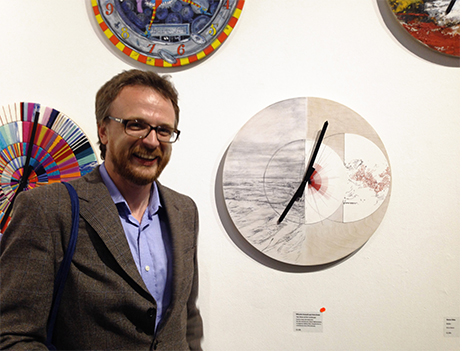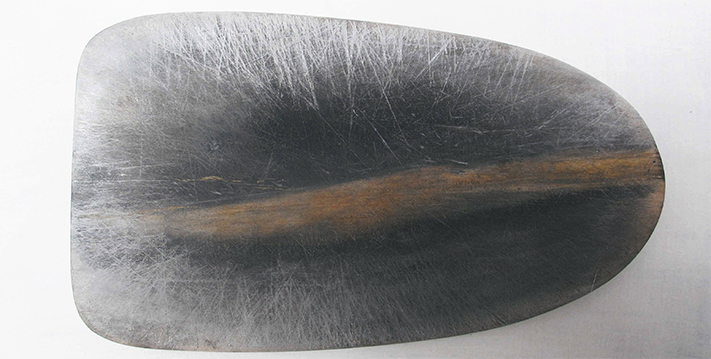
Across the hill chopping board
Objects
Chopping Boards
I have been interested in how humans have been making marks on everyday objects since pre-historic times, by their daily use and wear. I have been looking at how these personal marks seem to ‘freeze’ a moment just as a drawing does.
The series ‘Chop Marks’ has developed as a result of these thoughts. The works are landscape drawings made on worn kitchen chopping boards and incorporate the chopping marks of food preparation.
The kitchen chopping boards have been kindly donated by friends and colleagues, and therefore there is a personal connection in each work.
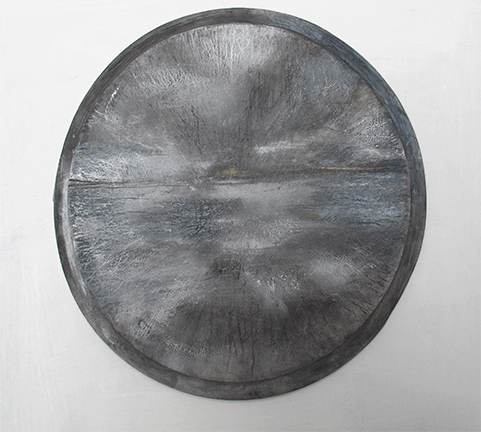
Water landscape chopping board
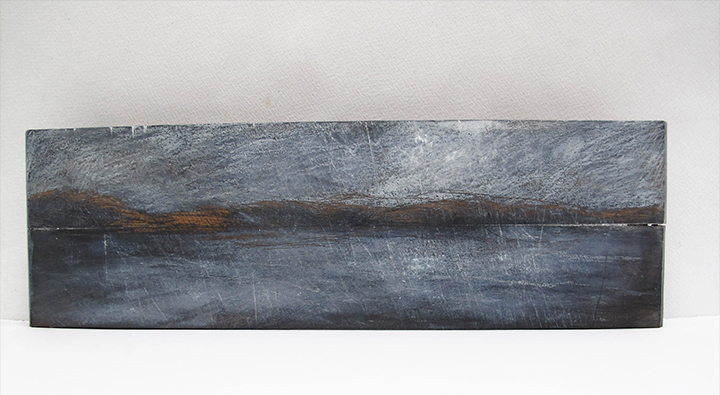
Long landscape chopping board
Small Objects
This is an experiment with the scale and materiality, using objects such as miniature furniture. The finished objects can be held, so that the audience can look into their hands and into a landscape in the miniature, echoing the sense of holding and looking at small archaeological objects, such as coins or figurines.
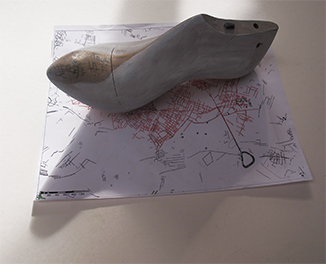
Field formation drawing
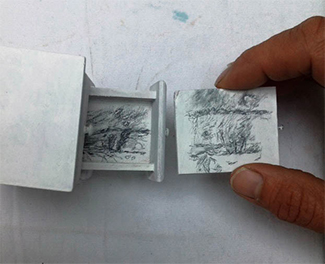
Drawer drawing
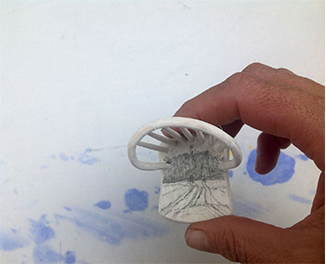
Chair drawing
Clocks
In 2013 Miranda Creswell was asked by The Art Room (a charity aimed at 5-16 year olds who are experiencing emotional and behavioural issues) to be part of an exhibition in the Mall galleries. Artists made works on clocks to raise money for the charity. She decided to collaborate with Dr Chris Green, a GIS specialist for EnglaID at the University of Oxford. They focussed on one piece of landscape on Salisbury plain, and presented it from two perspectives, the archaeologist’s and the artist. Miranda spent two days drawing on site. Chris worked with archaeological features drawn from aerial photographs as part of English Heritage’s National Mapping Programme.
Chris’s map shows features redrawn in red outlining a prehistoric and Roman field system at Longstreet in the Salisbury Plain Training Area. McOmish et al. (2002) thought that they could see a predominant alignment in the field system along the 26˚ compass bearing (and at 90˚ perpendicular to that, i.e. 116˚). In order to test this, Chris redrew the boundary lines of the field system and then re-plotted them from a common origin point. This resulted in the radial graph shown on the clock. The pattern that results does show a fairly distinct bias towards the alignment argued for by McOmish et al., with most lines clustering approximately around the 26˚ (shown in blue) and 116˚ compass bearings. This suggests that this field system was constructed according to a plan that, to some extent, ignored local topography.
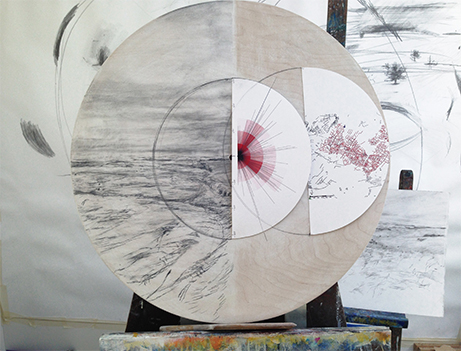
Clock in the studio
